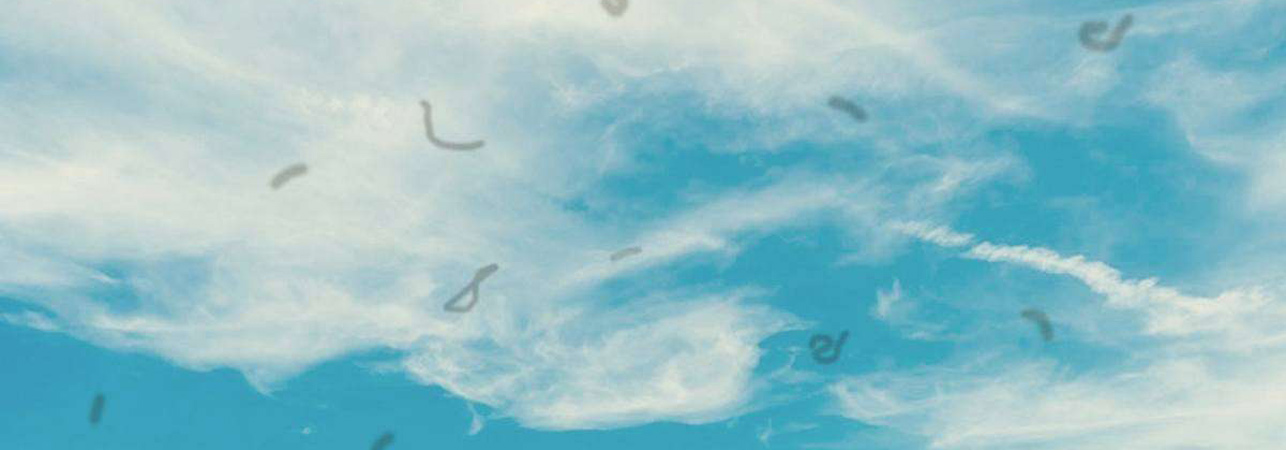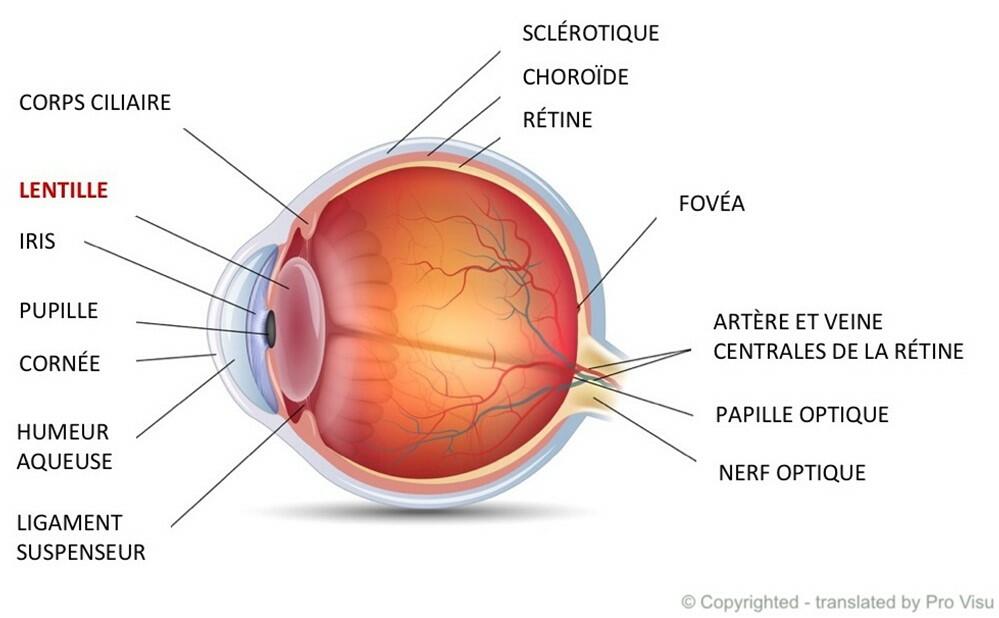Diseases
Floating bodies

Other terms
- Myodesopsias
- Flying flies
- Vitreous detachment
- Vitreous detachment
Definition
Floating bodies (or myodesopsias) are small, mobile particles that may appear in the field of vision. These particles are located in the vitreous body of the eye (or vitreous), the gelatinous substance that fills the eyeball. Floating bodies are generally areas of condensation in the vitreous body that cast their shadow on the retina.
The vitreous is transparent and avascular. It is in contact with the retina at the back of the eye. With age, it liquefies and can detach from the retina. Vitreous detachment from the retina is a natural process associated with ageing, and is usually benign. In rare cases, vitreous detachment can lead to retinal detachment by traction, tearing or haemorrhage. These complications require prompt medical attention.
Causes
The most common cause of floaters is vitreous detachment, which is common from the age of 50. Age favours the presence of floaters, although they can occur at any stage of life.
There are also other causes:
- In rare cases, the appearance of floaters is linked to the presence of blood cells in the vitreous, which may be due to a retinal tear or diabetic retinopathy, for example.
- If the floaters are very thin and numerous, this may indicate the presence of intraocular inflammation or infection.
- In the event of a sudden appearance of a large number of floating bodies, accompanied by flashes of light and loss of part of the visual field, it is advisable to consult an ophthalmologist within 12 to 24 hours to look for a tear or detachment of the retina. If the diagnosis is confirmed, immediate surgery is required.
Symptoms
Floaters appear as moving spots that move across the field of vision with the movement of the eyes. They can partially obstruct vision and make daily life difficult, particularly when reading or driving. They are sometimes accompanied by bright spots and are more visible when staring at a bright, uniform surface. Both eyes are usually affected.
The symptoms of vitreous detachment are a sudden appearance of numerous floating bodies, sometimes accompanied by flashes of light. However, vitreous detachment can be asymptomatic.
Diagnosis
It is advisable to consult an ophthalmologist in the event of symptoms leading to suspicion of vitreous detachment, in order to detect (and if possible avoid) possible complications such as retinal tearing or detachment.
The ophthalmologist will carry out a complete eye and vision examination and look for any retinal lesions using an ophthalmoscope or three-mirror lens.
Treatment
Symptoms associated with vitreous detachment usually resolve gradually over the following weeks. Rarely, they may persist and affect the patient's daily life. Treatment to reduce their impact may then be proposed:
Vitreolysis using the YAG laser, which breaks up the floating bodies
Vitrectomy, which consists of replacing the vitreous body with a saline solution.
These treatments carry risks (infection, haemorrhage, retinal detachment, cataract) and are therefore only offered in exceptional cases.
In the event of retinal damage, argon laser treatment will be offered. This consolidates the retina and prevents it from detaching, but has no effect on floating bodies.
Frequency
Floaters are very common, affecting almost everyone at some stage in their lives. They are more common in people with myopia, because their vitreous is less homogeneous, and in people who have had cataract surgery or have suffered trauma or inflammation of the eye.
Vitreous detachment is very common in people over the age of 50. It affects around two-thirds of people aged over 80.
References
Décollement postérieur du vitré - Hôpital ophtalmique Jules-Gonin
Corps flottants - Troubles oculaires - Édition professionnelle du Manuel MSD (msdmanuals.com)
Corps flottants décollement du vitré décollement de rétine mouches (ophtalmologie.fr)
Corps flottants du vitré | SNOF
Contenu revu et contrôlé le 27.04.2023.

